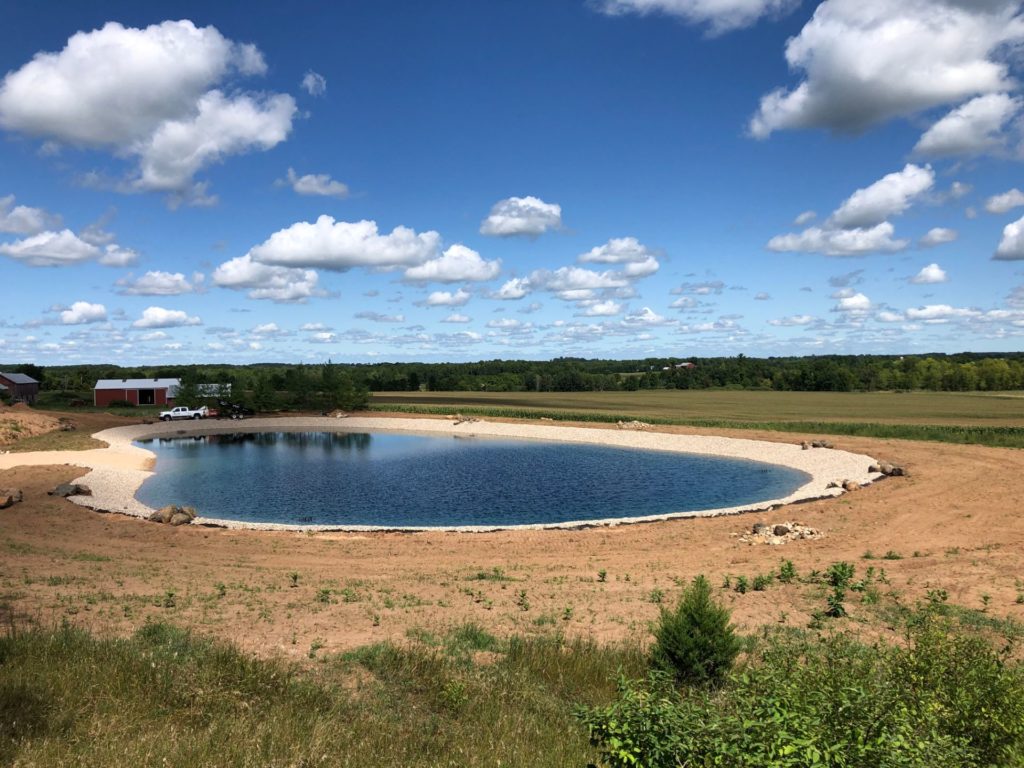By Wisconsin Lake & Pond Resource Staff
Most often, a typical site visit begins with a property owner pointing to the lowest area of their property for a pond. The majority of property owners think that this is the best location to look at when adding a pond to a property because it is “always wet” or “is close to groundwater” or “because everything drains there”. We really do lean away from these areas when looking to add a high functioning waterbody to a property. Utilizing the lowest portion of the property brings with it a few disadvantages.
Permitting
The lowest portion of a property that is “always wet” will have certain vegetation growing in that area. This vegetation is typically a representation of a potential wetland or even a mapped wetland area. There are certain features such as depth, size, and potential shape that can be restricted in those areas. If that area is in fact a mapped wetland, any soil that is excavated will need to be removed from any mapped wetland area. Overall project costs tend to rise with this type of permitting.

For those reasons, we prefer to stay “high and dry” when planning a lined pond. Most times the permitting can get quite complicated and above what the average property owner may be capable of. Permitting and delineations are a couple of our specialties, but if the property allows for alternate areas away from wetlands, this is always the best route to go.
Water Quality
The water quality of a lined pond in an upland area is typically superior to a surface water fed pond. Each rainfall does bring “free” water but with it a flush of nutrients. Nutrients in a pond are the enemy, causing algae blooms and cloudy water, mainly due to Nitrogen and Phosphorus. Some groundwater-fed ponds can even have negative water quality, due to nearby agriculture fields and fertilizers that leach into this water.

A synthetically lined pond will be filled and supplemented with well water, so we know exactly what water is being added and what water is being discharged (rainwater). We also add “good things” to the pond to help promote and maintain great water quality. Excessive surface water would eliminate this product and its benefits with constant flushing during a wet season.
Utilizing synthetically lined pond systems allows for a recreational pond to be located near an owner’s home for convenient access to changing locations and entertaining. Through the tried and true installation & design features of a lined pond, we can promote the best pond possible for a property owner to enjoy for years.
Contact Andy today for more information.
